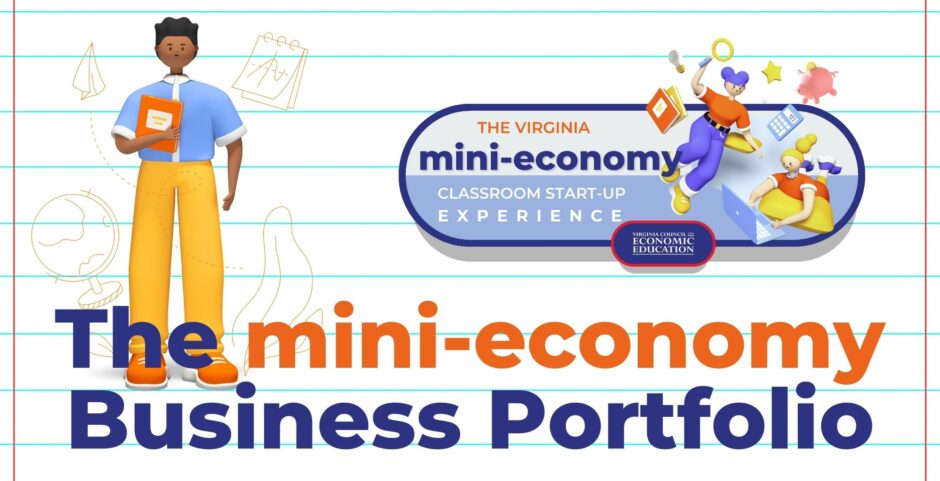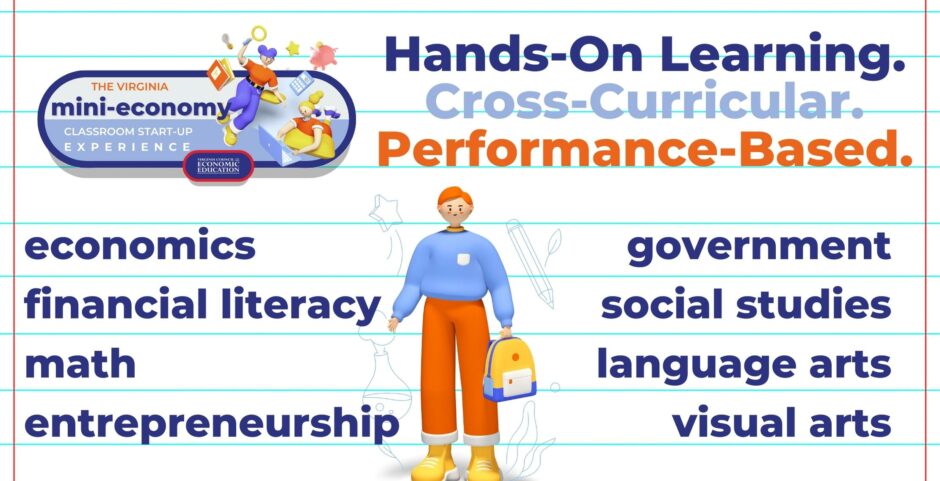
“What does it take to be a successful entrepreneur?” The Mini-Economy Business Portfolio uses this compelling question to engage the learning needs of 21st-century students. Each activity uses students’ knowledge of standards to build toward a coherent project goal: the creation of a flourishing classroom business.
How to use this:
- Start your classroom mini-economy using the Project-Based Learning plan below.
- Decide which of the assessment items below are right for your students.
- Prepare your students for each assessment item by choosing from the supporting lessons. These lessons focus on building content knowledge in economics. Some students will need more preparation than others.
- Students should save each assessment item that they complete to add to their growing business portfolio!





This lesson is for mini-economies in which students earn regular classroom income and opportunities to spend their earnings. Students make weekly decisions about whether to save or spend their income. They keep records, add up their savings, and evaluate the opportunity cost of their decisions.
Supporting Lessons:
Saving for the Hard Times – Migrant workers and saving choices
The ABCs of Saving

(Hist/Soc Sci 1.8, 2.10, 3.1h; English SOLs 3.9e) Students collect data on their classmates’ economic wants. They also investigate how they can make goods and services that address those wants, and then use a decision-making model to decide what to produce.
Supporting Lessons:
Would You Like to Be Your Own Boss?
Toys for Me: A Lesson on Choice
Open for Business!

(Hist/Soc Sci SOLs 2.10, 3.8 3.10; English SOL 3.9e)
Students analyze the different uses for natural, human, and capital resources that go into their product. They also evaluate the opportunity cost of using resources for one use instead of another.
Supporting Lessons:
We’re Riding on a Caravan: An Adventure on the Silk Road
The Write Stuff – Resources around the world
Booker T. Washington: “Fifty Cents and a Dream”
Uncle Jed’s Barber Shop (READ ALOUD HERE)

(Hist/Soc Sci SOLs 3.9, 3.10; English SOL 3.9e)
In this task, students conduct a simulation/experiment in which they compare two production processes. They hypothesize which will be more effective, and then analyze the results. Students then decide whether they should modify their Mini-Economy business’s production processes using the economic concept of specialization. They then create a diagram of their new production process.
Supporting Lessons:
Assembly Line Simulations
Why Do Most People Have a Job Where They Only Make One Good or Service?
Lean On Me–We Depend On Each Other

(English SOL 3.6a, b, c, d; 3.12)
Students analyze the purpose and effectiveness of particular advertisements using a series of questions. They then compare and contrast two different ads. Lastly, they deduce design principles for creating advertisements for their own products.
Supporting Lessons:
How Can We Get People to Buy our Product?
Be an Ad Detective

(Math SOLs 2.17, 3.17a)
Students survey their classmates as to how many of their products they would buy at different prices. They also create a graph in order to analyze and represent their data. Lastly, they make decisions about how much to produce based on their research. The supporting lessons emphasize a crucial aspect of entrepreneurship: the need to make enough money to cover costs.
Supporting Lessons:
Terry’s Lemonade Stand (Lesson plan for a case study in accounting and graphing)
Terry’s Lemonade Stand (Skit script)
Terry’s Lemonade Stand (Profit accounting sheet

(Hist/Soc Sci SOL K.9b, 2.8, 2.9, 3.8, 3.9; English SOL 3.9)
In this case study, students create an example of what someone in ancient China might produce, focusing on resources unique to China. They also explain how China differs from Rome in areas of specialization, and why those countries might need to trade. Note: This assessment item really must be used in conjunction with one or both of the two supporting lessons below.
Supporting Lessons:
Ancient Civilizations: Resource Review Relay Race
Ancient Chinese Marketplace


